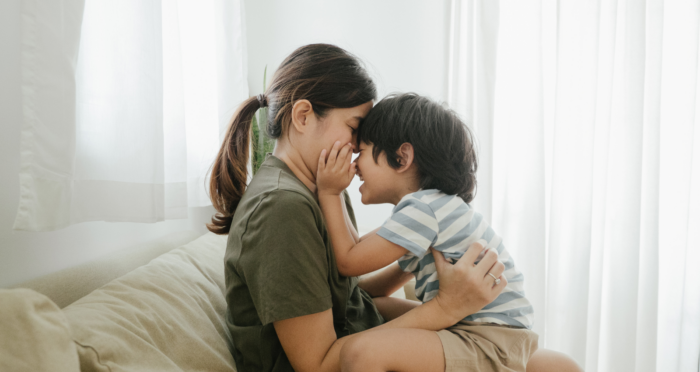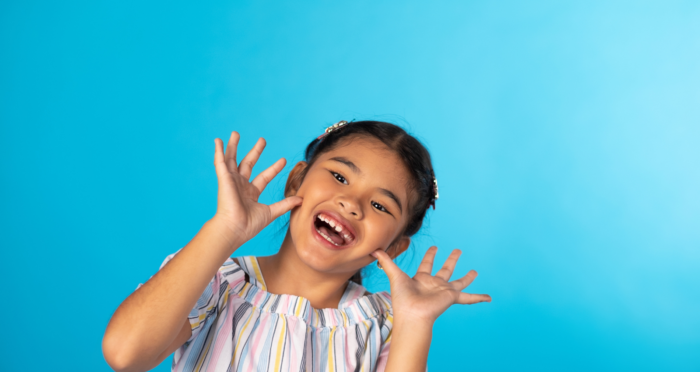With summer approaching, many parents often worry about how their children will regulate without the routine and structure that school brings. These activities encourage children of all ages to practice and strengthen helpful emotion regulation and identification skills and curb boredom in a fun and accessible way.
Three Activities for Regulating with Your Children
Mindfulness Nature Walk
Mindfulness is an extremely useful skill for both parents and children alike! Mindfulness is the practice of bringing awareness into your body and the world around it with nonjudgmental and kind observations. Mindfulness can focus on anything from your thoughts, feelings, and your environment. When practiced regularly, this skill helps individuals connect deeper to their experience of the world and enhances skills such as emotional awareness, self-regulation, compassion, and focus. To practice, find a fun path, trail, or hike and give your child or children an intention. Examples of different types of mindfulness walks:
Breathing Focused: Focus on your breaths as you walk, noticing the inhale and the exhale. Feel how the air fills your lungs and fuels your body, then notice how the air can slowly get pushed out through your mouth or nose.
Silent Walking: Walk in silence for five minutes, with focus both on quieting the noise you make through talking as well as noise you make through your steps. Make this a game to see who in the family can be the quietest on the walk.
Environment and Senses Focused: Make the intent of your walk to connect with the environment around you and what you are experiencing. This can look like locating five things in your surroundings that are a specific color, discuss what you notice with your five senses, or giving your children a list of objects to identify or collect such as rocks, leaves, or flowers.
Emotion Focused: Begin the walk by having each family member identify what emotion they are feelings. Encourage your children to feel open to any emotion they notice, even if they feel bored or silly doing this activity. You can follow this up with doing emotion check ins every so often or simply have one more at the end of the hike.
Compassion Focused: You may start the walk by encouraging your children to find three things they appreciated on the walk or hike. This can also simply be instructing your children to be appreciative of the nature, time together as a family, or thankful for their body and its hard work.
The fun part of mindfulness nature walks is that they can look different and have new intentions each walk. By giving your child a goal or intention on each walk, even if that intention is just to be aware that you are taking a walk, you encourage them to become more aware of their actions and the purpose behind those actions. By focusing on a variety of goals, from emotions to silence to the nature around them, you can bring attention and awareness into both body and mind (and get some exercise in too)!
Feelings UNO (or Other Board Games)
Feelings UNO is a great way to take an already fun game a step further and incorporate emotion identification skills into games! To play, assign each color an emotion. I most often use red for anger, blue for sadness, yellow for happiness, and green for worried or anxious. Each time a player sets down a card, have them tell a story about a time they felt the emotion matching their card. This helps children not only identify their emotions but identify both specific events in the past as well as recurring situations that often lead to heightened emotions. You can also increase the difficulty of this skill by having them explain a story with intensity that matches the number on their card, for example stating a time they were extremely happy if they play a yellow 9 or a time where they were only a little bit sad with a blue 3.
Other ways to change up this skill is to have each player identify where they feel these emotions in their body, such as anger often leads to clenched fists or worry can feel like butterflies in your stomach. Another way to keep this skill fresh is to change the goal to labeling coping skills for the corresponding emotion, for example I can scream into a pillow when I feel mad. Don’t have UNO? These skills are easy to apply to other games as well such as Candy Land, the Game of Life, or Monopoly by giving each colored space on the board an emotion or giving an emotion to each number spun or rolled. With this skill, children take games they already enjoy playing and encourage them to practice emotion identification through memories, somatic or physical experiences, and encourages emotion regulation through skill identification.
Emotion Regulation Glitter Jar
The final activity is an arts and crafts exercise to create a fun tool to help children practice emotion regulation. For this activity you will need a clear jar with a secure lid (I like to use mason jars), colored glitter (any shape and color will do, but ideally a mix of chunky and fine glitter), water, clear glue, optional food coloring to dye the water, and hot glue if you would like to secure the top. In this activity, instruct your children to pick two to three colors of glitter to place into the jar. This can be simply their favorite colors or colors to represent emotions they often have difficulty regulating, such as red for anger or green for anxiety.
Once your child has selected their colors, place a couple of scoops of both fine and chunky glitter into the jar. Add warm water and clear glue to make the mixture thicker. Once you find a good consistency, have an adult hot glue or secure the top. Now that your jar is assembled, this is a great time to discuss big emotions with your child.
Discussion
Just like trying to sort through, identify, and regulate your emotions, when something big happens in life, your emotions can get all mixed up and it can be hard to see clearly. The glitter jar is a good way to represent your emotions and how hard it can be to deal with them. Imagine your glitter jar represents your emotions. On an average day when your jar is just sitting on the shelf, the emotions are settled and still and it is easy to see through to the other side of the jar. Occasionally, small things, like bumping the shelf, will move some of the glitter around, but it only takes a little bit of time before it settles. This is like small things that occur throughout life, like a homework assignment, small arguments with a sibling, or having to do chores. However, when you pick the jar up and shake it around, the glitter mixes together, swirls around, and makes the water cloudy. This represents bigger stressors in life, like big tests, losing a pet or loved one, or having a big fight with a close friend.
When you’re feeling overwhelmed and having a hard time, the glitter jar can be a good chance to give yourself space and time to focus on emotional regulation. Take your jar to a quiet or safe space and shake things up. Watch the glitter swirl around and mix, just like how your emotions may be mixing around. When you feel ready, set the jar down or hold it still and watch the glitter slowly settle. You may notice that the bigger flecks of glitter settle faster than the fine flakes. This represents how some emotions can be easier to regulate than others, and that is okay! By waiting until the glitter fully settles, you allow yourself time for the emotions to settle as well.
To learn more about our Behavioral Health services and how we may support parents and children, please visit here.



